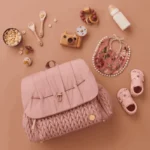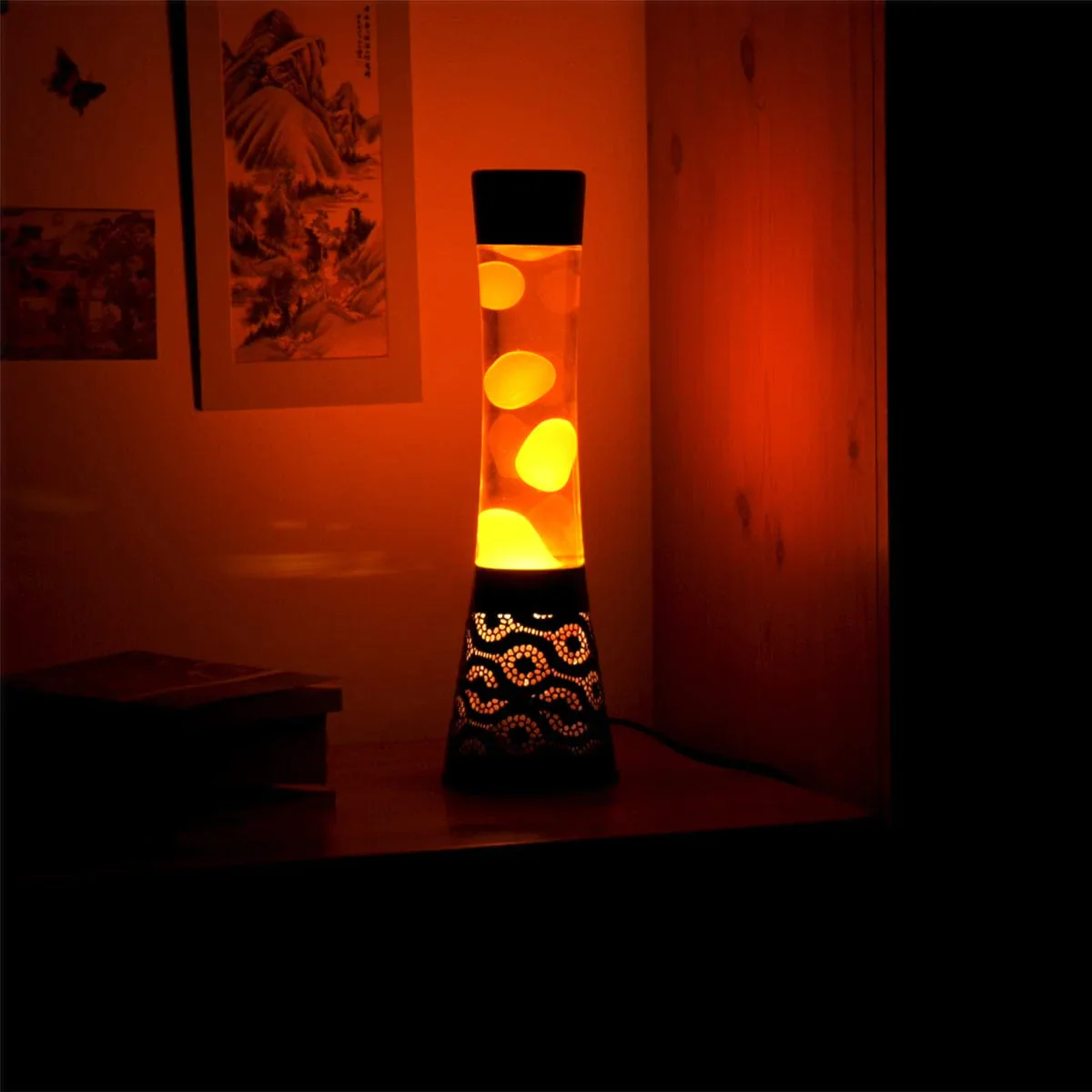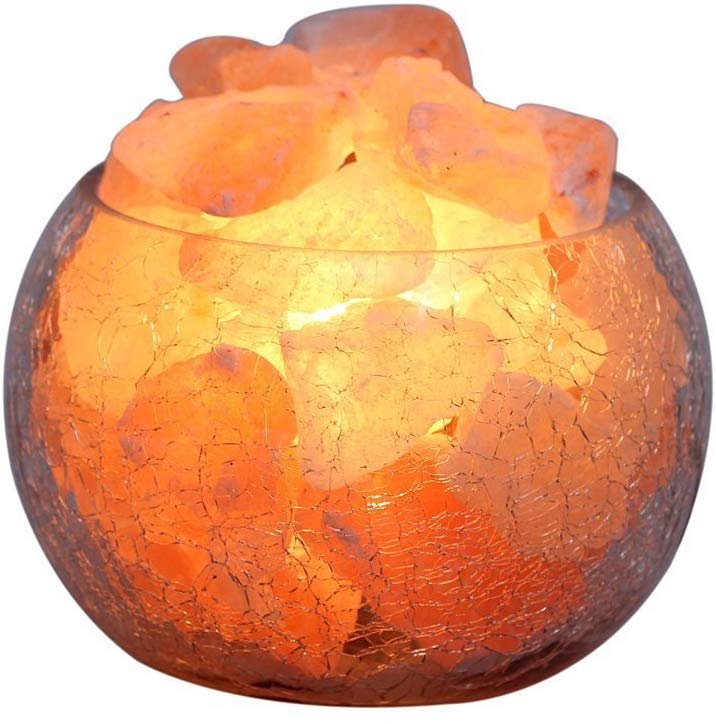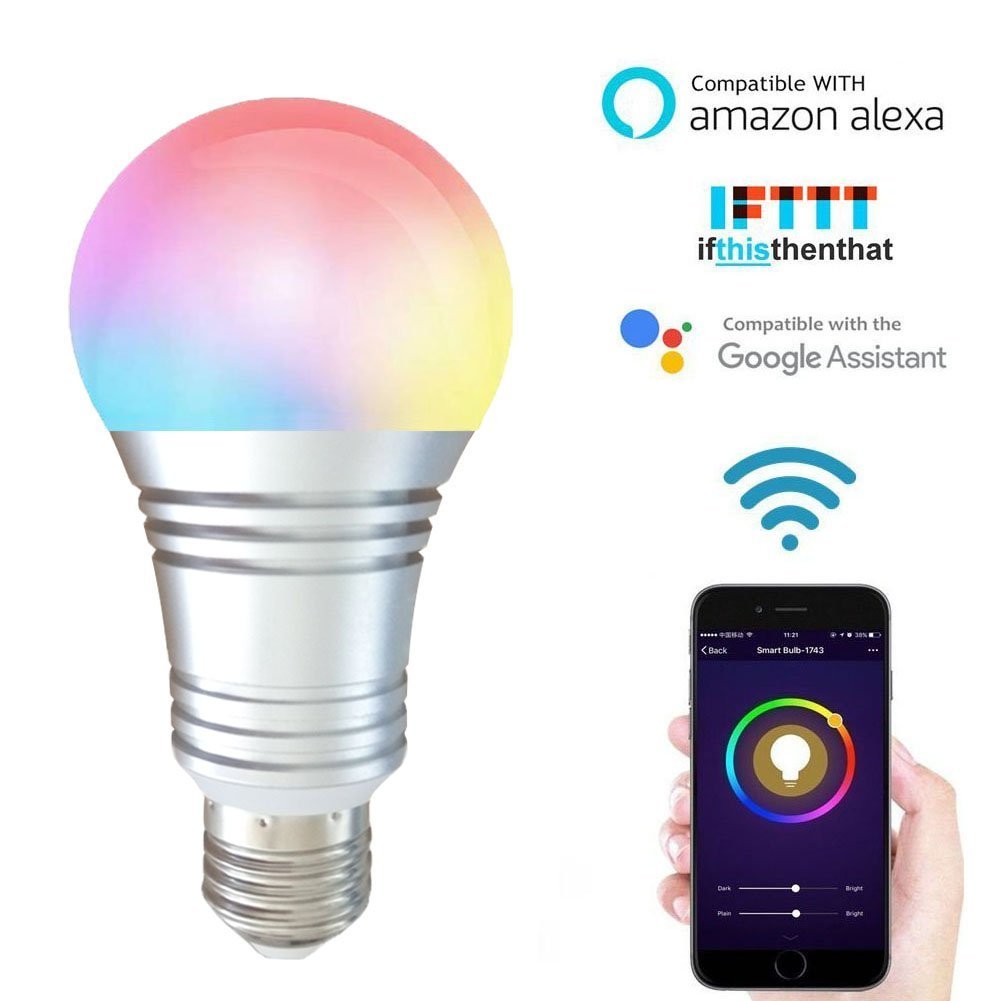Proper lighting is an indispensable element in the realm of needlework. Whether you’re an avid cross-stitch enthusiast or a dedicated embroiderer, effective illumination can significantly enhance your experience.
One of the most crucial aspects of engaging in such detailed crafts is ensuring that you can see your work clearly. The best lamp for needlework not only illuminates your project but also reduces eye strain, enhances accuracy, and allows for longer, more enjoyable sessions.
Good lighting is vital because it mitigates the risks of eye fatigue, which can occur when your eyes are strained from focusing on tiny, intricate details. By providing adequate light, you ensure that your eyes are not overworked, thereby maintaining comfort and precision.
Moreover, proper lighting can drastically improve the accuracy of your needlework. With the right lamp, you can distinguish between colors more effectively and avoid mistakes that might otherwise go unnoticed in poor lighting conditions.
As we navigate through this comprehensive guide, we will delve into the various types of lamps available, highlighting their features and benefits.
From magnifying lamps that offer a closer view to adjustable LED lights that can be positioned perfectly, there is a wide array of options designed to meet the specific needs of needlework enthusiasts.
Whether you’re looking for a portable solution or a more permanent fixture, this guide aims to help you find the perfect lighting solution to enhance your needlework projects.
Understanding the importance of proper lighting and familiarizing yourself with the available options will empower you to make an informed decision. With the right lighting, your needlework can be not only a hobby but a truly enjoyable and stress-free activity.
Types of Lamps Suitable for Needlework
When it comes to finding the best lamp for needlework, understanding the different types available can significantly enhance your crafting experience. Each type offers unique advantages and potential drawbacks that cater to various setups and personal preferences.
Floor lamps are a popular choice among needlework enthusiasts due to their versatility and ability to illuminate a large area.
These lamps typically feature adjustable arms and heads, allowing you to direct light precisely where you need it. However, they can take up considerable floor space and may not be ideal for smaller workspaces.
Desk lamps are another excellent option, especially for those who prefer a more compact lighting solution. These lamps are designed to sit on your work table, providing focused, direct light. They often come with adjustable features and multiple brightness settings.
The main drawback is that they occupy valuable desk space, which might be a concern if your workspace is already limited.
Clip-on lamps offer a highly flexible solution by easily attaching to various surfaces, such as the edge of a table or a hoop stand. These lamps are incredibly portable and can be positioned to illuminate specific areas of your needlework.
However, their smaller size might not provide as much light coverage as floor or desk lamps, making them better suited for supplementary lighting.
Portable lamps are ideal for those who enjoy needlework on the go. These battery-operated or rechargeable lamps can be moved easily from one location to another, providing you with the flexibility to work wherever you please.
On the downside, their battery life can be a limiting factor, and they might not offer the same level of brightness and stability as plug-in models.
Each type of lamp has its unique advantages and potential limitations. By considering factors such as your workspace size, mobility needs, and lighting preferences, you can choose the best lamp for needlework that will enhance your crafting experience and ensure precision in your stitches.
Key Features to Consider
When selecting the best lamp for needlework, several key features should be prioritized to ensure optimal functionality and comfort. Understanding these features can significantly enhance the quality of your needlework experience.
Brightness Levels: One of the primary considerations is the lamp’s brightness. A good needlework lamp should offer adjustable brightness levels. This flexibility allows you to adapt the lighting to different times of the day and types of needlework, ensuring that your eyes are not strained.
Adjustable Arms: Another crucial feature is the lamp’s adjustability. Lamps with adjustable arms or goosenecks provide the ability to direct light exactly where it’s needed. This is particularly important for intricate needlework, as it ensures that every stitch is clearly visible.
Magnification Options: For those working on detailed projects, magnification can be a game-changer. Lamps that come with built-in magnifiers or have attachments for magnifying glasses allow for greater precision. This feature is essential for tasks that require a high level of detail, reducing eye strain and improving accuracy.
Color Temperature: The color temperature of the lamp also plays a significant role. A lamp with adjustable color temperature settings can mimic natural daylight, which is ideal for needlework. This helps in distinguishing between colors and shades more accurately, resulting in better-quality work.
Energy Efficiency: Finally, consider the lamp’s energy efficiency. LED lamps are generally the best choice as they consume less power and have a longer lifespan compared to traditional bulbs. This not only reduces energy costs but also provides a consistent light source for prolonged periods of needlework.
By focusing on these features, you can ensure that you select a lamp that enhances your needlework experience, making your projects more enjoyable and less straining on your eyes.
Top Lamp Recommendations

When it comes to selecting the best lamp for needlework, various factors such as brightness, adjustability, and budget come into play.
Below, we have curated a list of top lamp recommendations, ensuring a range of options to suit different needs and preferences. Each product has been carefully reviewed based on its features, performance, and value for money.
1. OttLite Dual Shade LED Floor Lamp
The OttLite Dual Shade LED Floor Lamp is a premium choice for serious needlework enthusiasts. This lamp features dual shades with adjustable brightness, allowing for optimal illumination without straining your eyes.
The flexible neck and height adjustment capabilities ensure that light is directed exactly where needed. Though on the higher end of the price spectrum, its superior build quality and functionality make it a worthwhile investment.
2. Brightech Litespan LED Reading and Craft Floor Lamp
The Brightech Litespan LED Reading and Craft Floor Lamp is a versatile option that provides excellent value for money. Its energy-efficient LED light produces a bright, natural daylight spectrum that enhances visibility and reduces eye fatigue.
The adjustable gooseneck makes it easy to position the light precisely over your needlework. This lamp is moderately priced, making it accessible to a wider audience without compromising on quality.
3. Daylight Company LLC UN1530 Easy-Twist Portable Lamp
For those who require portability, the Daylight Company LLC UN1530 Easy-Twist Portable Lamp is an excellent choice.
This lamp is compact and lightweight, making it easy to move around and ideal for on-the-go needlework. Despite its size, it offers bright and consistent lighting, thanks to its daylight LED technology. Its affordability, combined with its portability, makes it a popular choice among hobbyists and professionals alike.
4. Vekkia Rechargeable LED Book Light
If you are looking for a budget-friendly option, the Vekkia Rechargeable LED Book Light is a fantastic choice.
Although primarily designed for reading, its adjustable brightness levels and flexible neck make it suitable for needlework. Its compact size and rechargeable battery add to its convenience, making it a great option for those who need a lightweight and portable lighting solution.
Choosing the best lamp for needlework depends on your specific needs and budget. Whether you opt for a high-end model with advanced features or a simple, portable lamp, the key is to ensure it provides sufficient lighting to enhance your needlework experience.
Comparing LED vs. Fluorescent vs. Incandescent Lighting
Choosing the best lamp for needlework involves understanding the differences between LED, fluorescent, and incandescent lighting. Each type of lighting offers distinct advantages and disadvantages that can significantly impact your needlework experience.
LED lighting is renowned for its superior energy efficiency and long lifespan. LEDs consume significantly less electricity than their fluorescent and incandescent counterparts, making them an eco-friendly option.
Additionally, LEDs produce a bright, clear light that closely mimics natural daylight, which can reduce eye strain and improve the visibility of intricate needlework patterns. However, the initial cost of LED lamps can be higher, though this is often offset by their durability and lower operating costs over time.
Fluorescent lighting, on the other hand, is known for its energy efficiency and widespread availability. Fluorescent lamps are generally more affordable than LEDs and provide a more diffuse light, which can be beneficial for evenly illuminating larger workspaces.
However, they may produce a cooler, sometimes harsh light, which might not be ideal for detailed needlework. Additionally, fluorescent bulbs contain small amounts of mercury, necessitating careful disposal.
Incandescent lighting, once the standard in home illumination, is now less favored due to its lower energy efficiency and shorter lifespan. Incandescent bulbs emit a warm, yellowish light that can create a cozy atmosphere, but they tend to generate more heat, which can be uncomfortable during long needlework sessions.
While they are typically the least expensive upfront, their frequent replacement and higher energy consumption make them less cost-effective in the long run.
For needlework enthusiasts, the best lamp choice often comes down to personal preference and specific needs. LED lamps generally offer the best combination of light quality, energy efficiency, and longevity, making them an excellent choice for detailed and prolonged needlework.
However, those seeking a more budget-friendly option might consider fluorescent lighting, while incandescent lamps might appeal to those who prefer a warmer light and do not mind the trade-offs in efficiency and lifespan.
Setting Up Your Needlework Space
Creating an ideal needlework space involves careful consideration of lighting, positioning, and overall comfort. Proper lighting is crucial, as it directly impacts your ability to see fine details and reduces eye strain during extended sessions. Selecting the best lamp for needlework can significantly enhance your experience and productivity.
To optimize your lighting, start by positioning your lamp correctly. Place it to the side of your dominant hand to minimize shadows cast onto your work area. If you are right-handed, position the lamp to your left, and vice versa for left-handed individuals. This strategic placement helps to illuminate your work without creating obstructive shadows.
Minimizing glare is another important aspect of setting up your needlework space. Choose a lamp with an adjustable arm and head so you can direct light precisely where it’s needed. Consider lamps with diffusers or shades that soften the light, reducing harsh reflections on your material.
LED lamps are often recommended for needlework due to their bright, white light and energy efficiency.
In addition to direct lighting, ambient lighting plays a vital role in reducing eye strain. Ambient lighting softens the contrast between your needlework and the surrounding environment, creating a more visually comfortable space.
Overhead lights, floor lamps, or wall-mounted fixtures can provide this necessary background illumination.
Creating a comfortable and efficient workspace is essential for long-term health and productivity. Ensure that your chair and work surface are ergonomically designed to support good posture. Adjustable chairs, proper back support, and a work surface at the right height can prevent discomfort and fatigue.
Additionally, keep your workspace organized with handy storage solutions for your tools and materials, allowing you to focus solely on your needlework.
By carefully setting up your needlework space with the best lamp for needlework and considering factors like positioning, glare reduction, ambient lighting, and ergonomic furniture, you can create an environment that enhances both your comfort and productivity.
Maintaining and Caring for Your Lamp
Proper maintenance of your needlework lamp is crucial for ensuring its longevity and optimal performance. Routine care helps avoid interruptions during your needlework projects and keeps your lamp functioning efficiently. Below are essential tips for maintaining and caring for the best lamp for needlework.
Firstly, regular cleaning is vital. Dust and debris can accumulate on the lamp’s surface and light source, diminishing brightness and clarity. Use a soft, dry cloth to wipe the exterior and a microfiber cloth for the lightbulb or LED light panel.
Avoid using harsh chemicals or water, as they can damage the lamp’s components. For hard-to-reach areas, a can of compressed air can be useful.
Replacing bulbs is another critical aspect of lamp maintenance. The best lamp for needlework often uses LED bulbs due to their long lifespan and consistent light quality. However, if your lamp uses traditional bulbs, ensure you have replacements on hand.
When changing bulbs, always turn off and unplug the lamp to avoid electrical hazards. Follow the manufacturer’s instructions for bulb replacement to ensure compatibility and performance.
Troubleshooting common issues can also help maintain your lamp’s efficiency. Flickering lights can indicate a loose bulb or connection, so check and secure all components. If the lamp fails to turn on, verify that it is plugged in and the outlet is functioning correctly.
For LED lamps, a dimming light could signal the need for a new power adapter. Regularly inspecting the lamp’s cord and plug for wear and tear is also advisable to prevent electrical issues.
Lastly, regular maintenance checks are essential. Schedule routine inspections of your needlework lamp to identify and address potential problems early. This proactive approach will help you avoid unexpected disruptions and keep your needlework projects on track.
By following these guidelines, you can ensure that your needlework lamp remains in excellent condition, providing you with reliable and efficient lighting for all your intricate needlework tasks.
Conclusion: Finding Your Perfect Needlework Lamp
Throughout this comprehensive guide, we have delved into the essential factors that make up the best lamp for needlework.
From understanding the importance of adjustable brightness and color temperature to exploring various types of lamps like floor, table, and magnifying lamps, we have covered the key aspects that can significantly enhance your needlework experience.
Good lighting is not just a matter of convenience; it is crucial for maintaining eye health and ensuring precision in your craft.
We also highlighted the significance of choosing a lamp with high-quality LED lights, which offer energy efficiency and longevity, while providing the clear and consistent illumination necessary for detailed tasks.
Portability and flexibility were other important features discussed, ensuring that your lamp can adapt to different settings and projects.
Whether you prefer a sturdy floor lamp that stands beside your workspace or a compact, adjustable desk lamp, the variety of options available means you can find a solution tailored to your specific needs.
Moreover, we explored some top-rated products in the market, giving you a head start in your search for the ideal needlework lamp. These recommendations are based on user reviews and expert opinions, ensuring that you make a well-informed decision.
Remember, the best lamp for needlework should not only meet your functional requirements but also complement your work environment, enhancing both comfort and efficiency.
In conclusion, investing in the right lighting solution is a step towards better craftsmanship and a more enjoyable needlework experience.
Take the time to consider the features and recommendations discussed in this guide, and you will be well on your way to finding the perfect lamp that suits your needs. Happy stitching!









